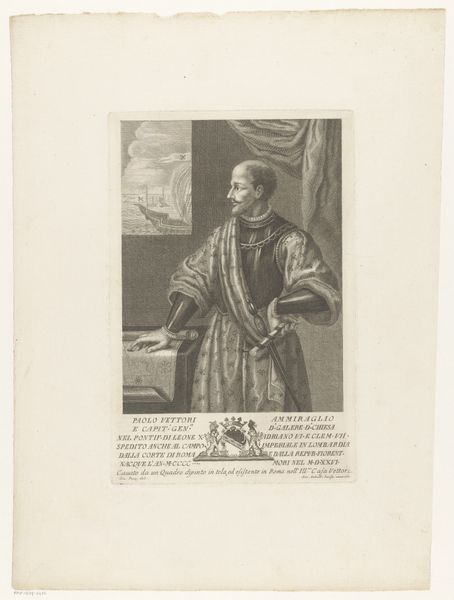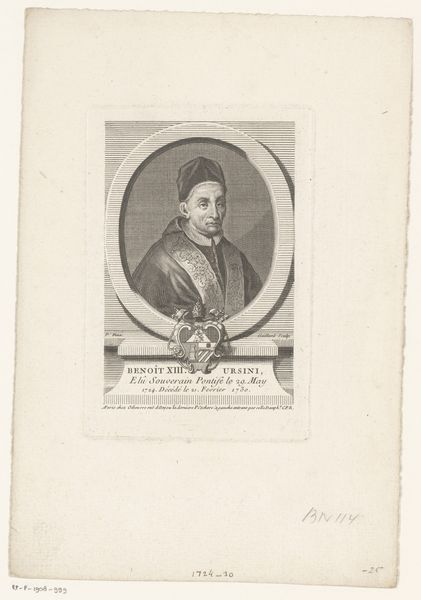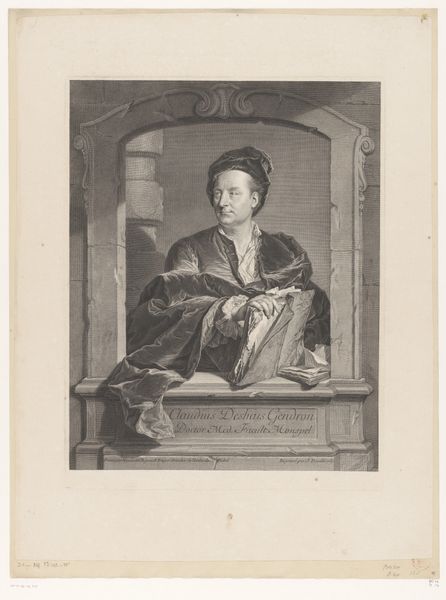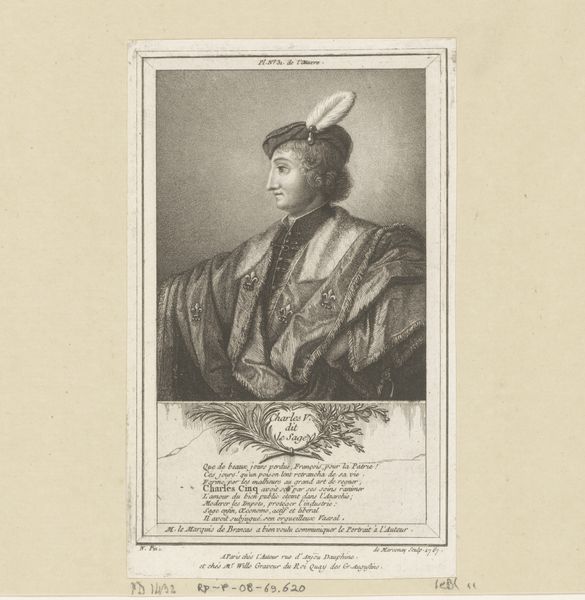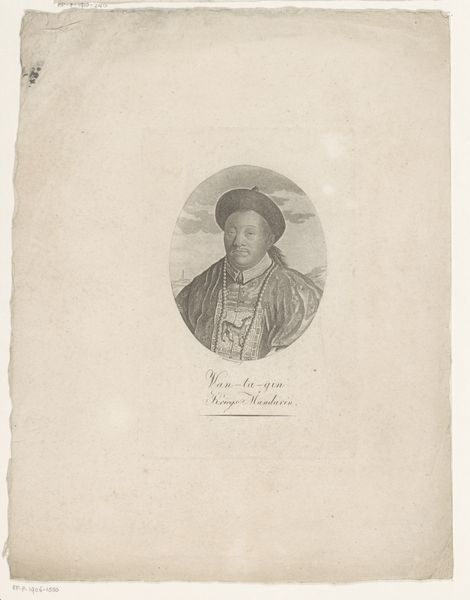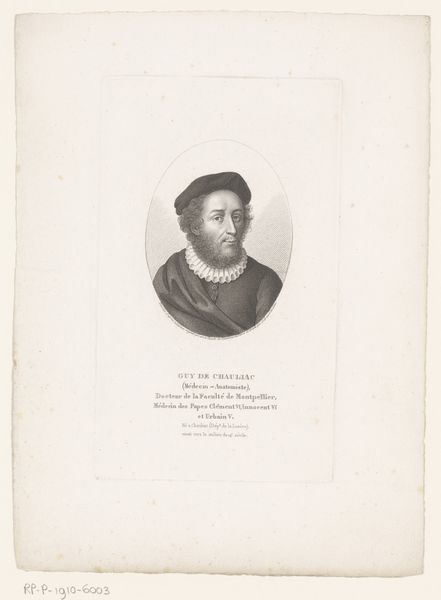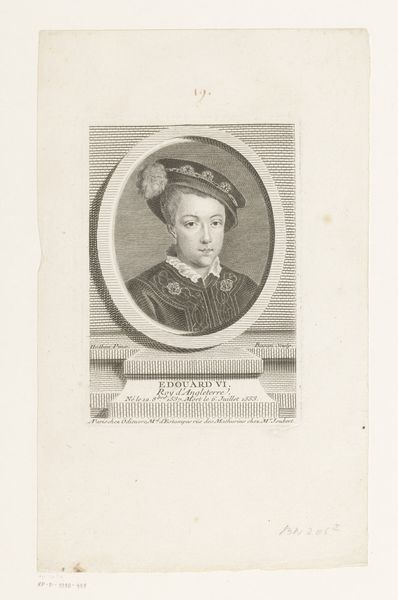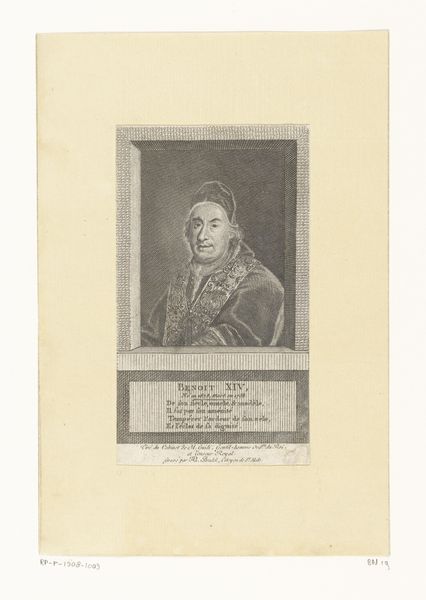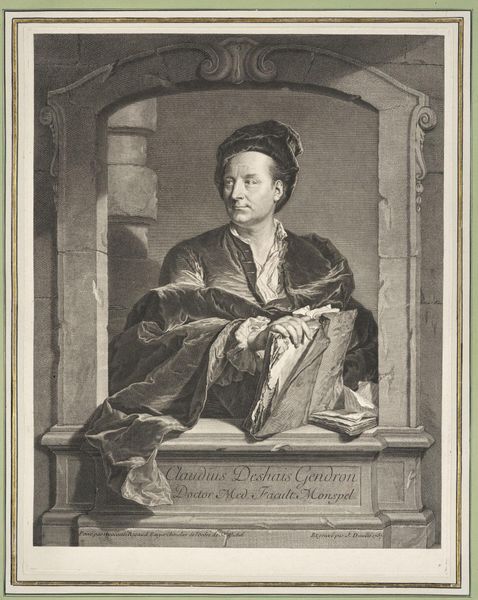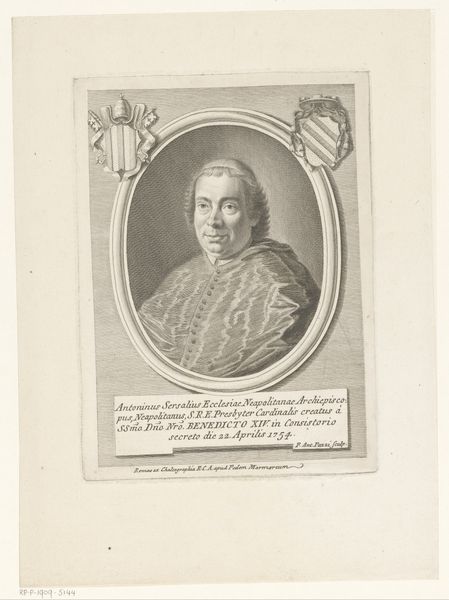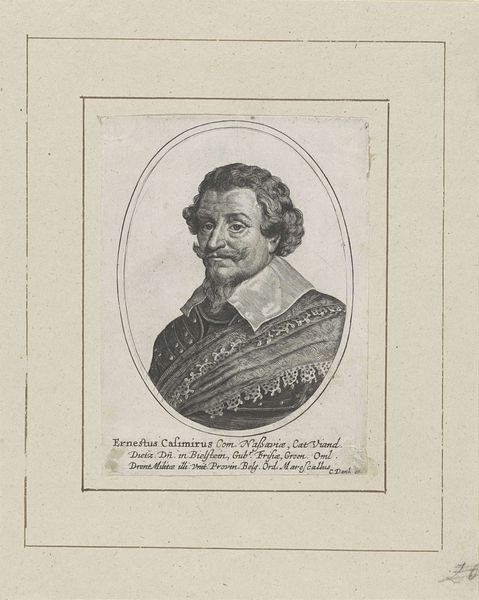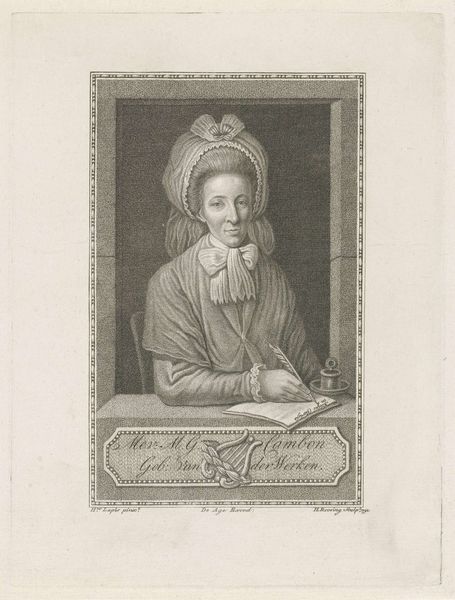
Dimensions: height 176 mm, width 111 mm
Copyright: Rijks Museum: Open Domain
Curator: We are looking at an engraving by Antoine de Marcenay de Ghuy created sometime between 1734 and 1808. The work is entitled "Portret van Karel VII, koning van Frankrijk" – or, in English, “Portrait of Charles VII, King of France.” Editor: It's remarkably detailed, considering it's a print. There's a melancholic air about the king, wouldn’t you say? A slight droop to the mouth and a somber gaze. The lines create an impressive tonal range despite the limited palette. Curator: Yes, the texture is beautifully rendered through the engraving technique, especially noticeable in the drape of his cloak and the subtle gradations in his face. The lines do more than just depict; they seem to almost caress the forms, emphasizing volume. Editor: Considering the Baroque leanings visible here, I wonder about its role in shaping public perception of Charles VII? It seems less about glorification and more about capturing an individual, but still within the visual language of power. Is it just about portraying a king, or also cementing a legacy? Curator: One could analyze the semiotics of his clothing, the feathered cap, the heavy chain – each object contributes to the construction of his royal image. Notice how these shapes sit within the larger composition, anchoring him in a visual language immediately legible to the audience of that time. Editor: The text below the portrait interests me too. The political message feels very overt. It positions him relative to both the people of France and even, interestingly, to Albion – olden term for Britain. Was this perhaps commissioned to assert something politically during its era of creation? It isn’t just aesthetic; it’s deeply embedded in historical dialogue. Curator: Precisely. And on a purely visual level, the framing, how the central figure emerges from the curtain...it serves to further monumentalize the individual. It shows the Baroque love for drama but distilled through the precision of the engraving process. Editor: So it’s a historical document skillfully utilizing artistic means for both representation and perhaps a certain degree of persuasion. Quite fascinating to unpack these multiple layers. Curator: Agreed. It compels one to delve deeper into the specifics of the court that commissioned the portrait. There’s more than meets the eye here.
Comments
No comments
Be the first to comment and join the conversation on the ultimate creative platform.
